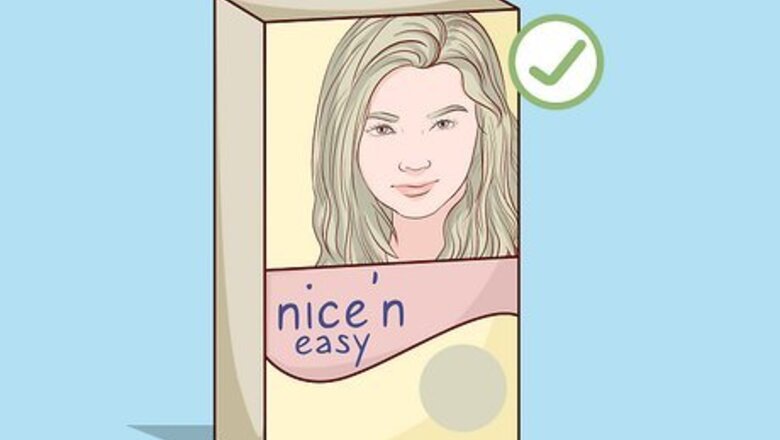
views
Choosing a Color
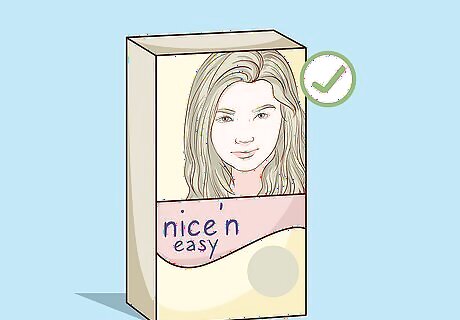
Choose a permanent hair color to cover grays most effectively. For the best coverage and long-lasting color, opt for a permanent dye over semi-permanent. However, since most permanent dyes can be harsh on your hair, look for a gentle formula with as little ammonia as possible. For example, Clairol Nice 'N Easy is a great permanent dye with low ammonia.
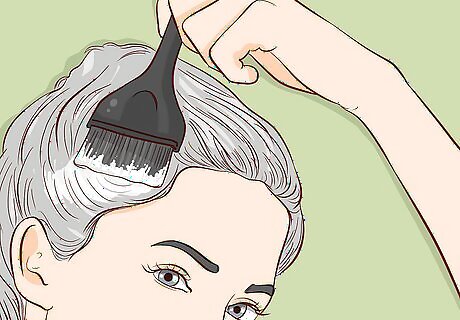
Use a semi- or demi-permanent dye for less damage to your hair. These types of dye won't cover the gray as effectively as a permanent dye will, but they can temporarily blend your grey color a bit. Semi- and demi-permanent dye will usually last anywhere between 4-12 washes, depending on how fine and porous your hair is. This is a good option if your hair is less than 25% grey.
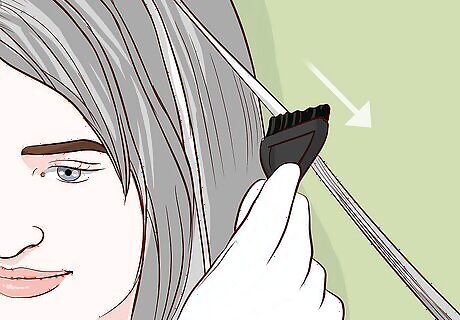
Weave in some highlights or lowlights to contrast against the grey. If you're feeling washed out by fully (or almost fully) grey hair, add in some lighter pieces on top or a darker base to kick up the contrast. This is a great way to transform your look without having to dye all of your hair, plus it requires less commitment since you don't need touch-ups as often. Black lowlights can look quite stark against grey hair, so stick to colors around 1-2 shades darker than your natural pre-grey color. For highlights, choose tones ranging between pearl to medium blonde. Use a few ash-blonde streaks to blend the highlights into your natural grey. For the best results, you should always have your highlights done by a professional stylist.
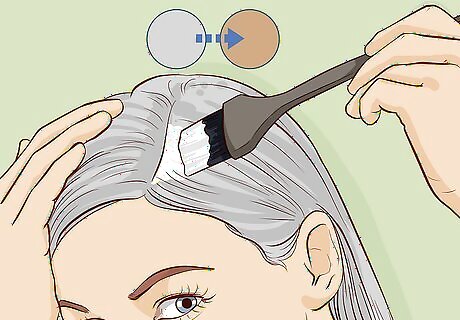
Stay close to your original color if less than half of your hair is grey. Choose a color that's within 2 shades lighter or darker than your normal hair color for a more natural all-over effect. If you're only touching up your roots, choose a dye that matches your original color exactly or looks a shade or 2 darker. The roots are the most translucent part of grey hair, so they may need a slightly darker shade to match your original color.
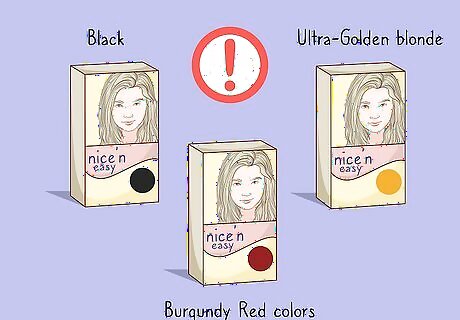
Avoid all-over black, ultra-golden blonde, and burgundy red colors. These shades can have an aging effect, accentuating wrinkles and lines on the face. Instead, look for softer neutral shades like deep brown, dark blonde, or coppery red. If your natural hair color is black or golden blonde, then you're the exception! If you like your natural hair color, then keep dyeing it that way.
Dyeing Your Hair
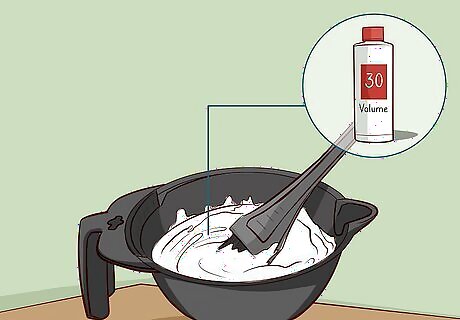
Mix the dye and developer according to the instructions on the box. Pour the 2 products into a plastic or glass bowl and use a clean applicator brush to mix well. Generally, you'll need a 1:1 ratio of dye and developer, but some companies require a 1:2 ratio. Follow the instructions on the box for the best results! Don't use a metal bowl to mix the hair dye, since metal will oxidize and affect the color.
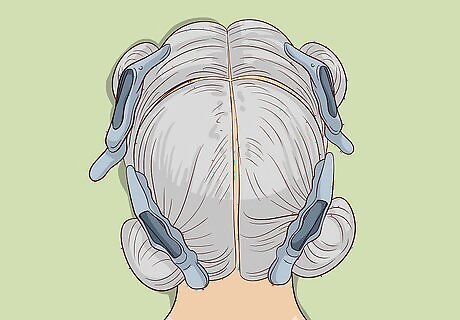
Divide and clip up your hair into 4 sections. Use the pointed end of your applicator brush to part your hair from front to back, then from ear to ear. Secure each section with a plastic clip and let down 1 section at a time while you're applying the dye, working from back to front. Don't use a metal clip to pin up your hair. The chemicals in dye products can react badly when they come into contact with metal, which can damage your hair and scalp. It's always good to section off your hair when doing this.
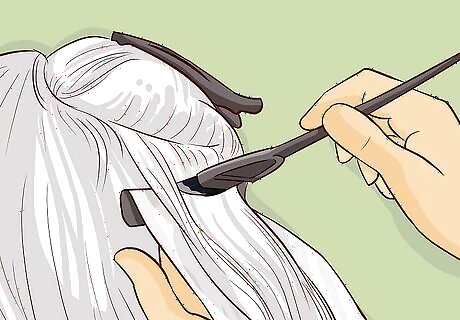
Paint the dye onto thin layers of hair with an applicator brush. The brush gives you more control than a thin-tipped bottle and lets you push the color into the roots. Work in thin layers of hair, 1 section at a time, painting on both sides of the layer to fully saturate the hair. If you're only dyeing your roots, paint the dye only on grey hair and avoid touching your natural color as much as possible. Overlapping can create a dark line in your hair. If you're applying the dye to all of your hair, start with your roots and work your way down, painting the dye onto the entire strand. If you're creating highlights, paint the color onto various strands to blend it into the grey. If you're adding lowlights, unclip your bottom sections of hair. Either dye the whole bottom section or, for a more natural look, space out some dyed strands around the back of your head. Wrap the dyed hair in foil to keep it from touching the rest of your hair. Thinner sections of hair will look most natural.
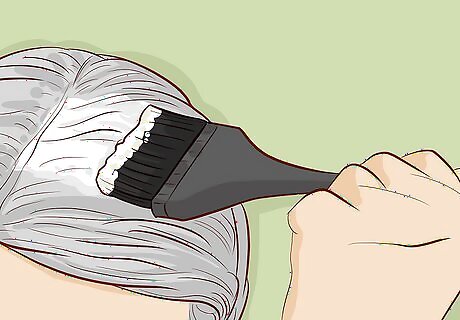
Apply the dye as close to the roots' base as possible. Use your applicator brush to push the dye toward the roots, getting as close to the scalp as you can without touching it. This will help you save money and time by stretching the time needed between touch-ups. Generally, you should only need about 8 weeks between root touch-ups.
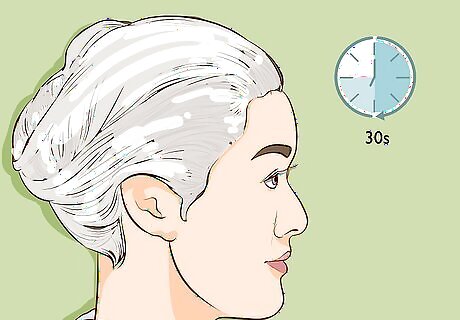
Leave the dye on for 30 minutes or for the directed amount of time. Although some manufacturer's instructions may vary, you should generally let the dye sit in your hair for 30 minutes. Set a timer to make sure you don't forget about it! If you're dyeing your whole head, you can keep the dyed hair off your shoulders by tucking it into a plastic cap.
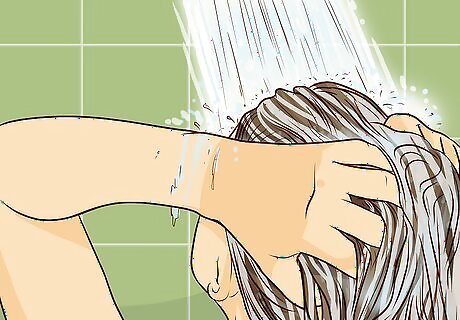
Wash the dye out of your hair until the water runs clear. In a sink or shower, rinse the dye out with clean water. Find a comfortable, warm temperature that falls between cold, which won't be able to effectively rinse out the dye, and hot, which can actually pull dye out of the hair. Keep rinsing your hair until the water no longer has a dark tint. After rinsing, apply a color-protecting conditioner to seal your color. Use it according to the manufacturer's directions.
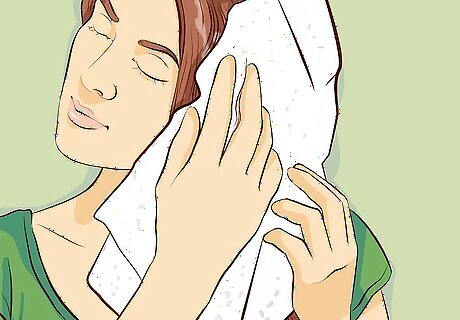
Towel-dry your hair lightly, then let it air-dry completely. Since grey hair is more sensitive, be very careful about drying it. Don't use a blow dryer, which can be very damaging on newly dyed hair. Instead, gently squeeze out the excess water with a towel and let it air-dry completely. Use an old towel, since any lingering excess dye may transfer to the material when you dry your hair.
Maintaining Your Dyed Hair
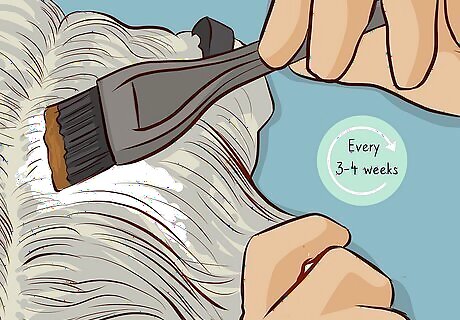
Color your hair every 3-4 weeks if you're mostly grey. Maintaining a color over gray hair can be quite an investment! A 3-4 week cycle will keep your color vibrant and refreshed. You can either dye your own hair or go to a salon. If you'd rather have a professional perfect the color for you, go to a salon. This can get pricey, so if you're on a budget, buy your own dye and color it yourself. If less than half of your hair is grey, you can usually stretch it to every 5 weeks.
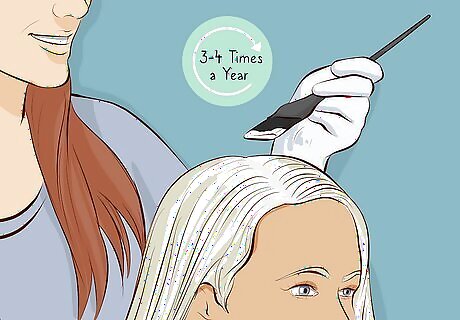
Have your highlights redone at least 3-4 times a year. Since highlights blend in with the lightness of grey hair, they don't require as many regular touch-ups. However, if you want to keep them looking neat and refreshed, go to the salon when the roots have grown out.
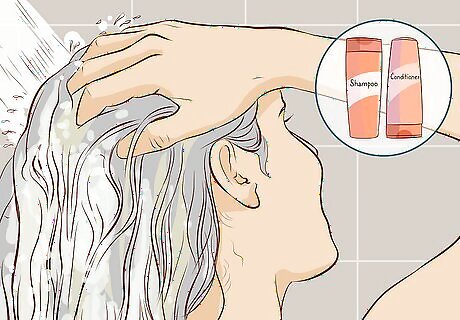
Wash your hair with a color-safe shampoo and conditioner once a week. To maintain the color of your dyed hair, it's important to use specially formulated shampoo and conditioner with color-safe ingredients (like sulfate-free and sodium chloride-free products). Since grey hair can be drier and more brittle, you only need to wash it around once a week. Avoid color-safe formulas with purple or ashy tones, however, as these can emphasize the grey in your hair. Try to wash your hair with cold water rather than hot water. Also, make sure you're conditioning your hair from the roots to the ends. Keeping your hair moisturized is a big part of maintaining your color—the stronger you keep your hair cuticle, the better it will hold the color.
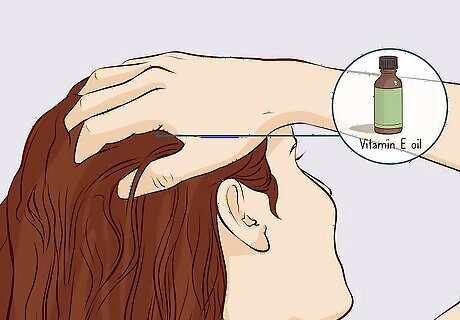
Leave vitamin E oil in your hair overnight to replenish its moisture. Since grey hair is stiffer and drier than normal hair, you may need to use a vitamin E treatment to improve its health and shine. Whenever your hair is feeling particularly dry, work vitamin E oil through your hair, wrap it in a bandana, and leave it on for the night while you sleep. Wash it out with shampoo in the morning. Do this once a week or whenever your hair is feeling particularly dry. You can find vitamin E oil online or at a local drugstore.




















Comments
0 comment